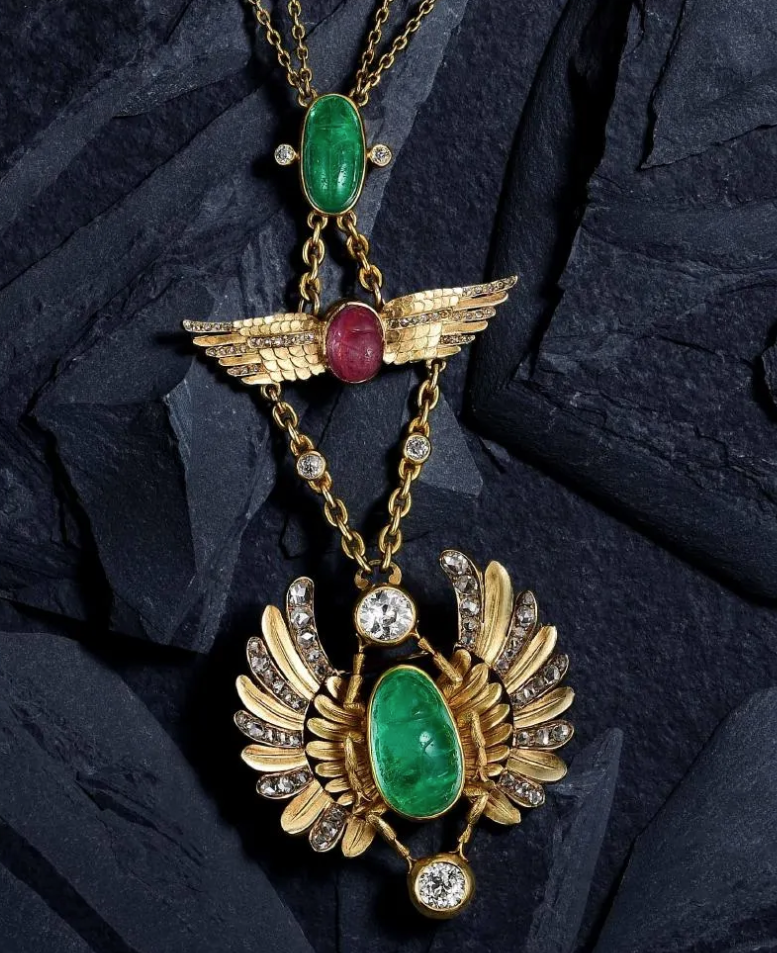
NEW YORK — Viewers of the 1999 movie The Mummy might understandably develop a fear of scarabs as flesh-hungry monsters. Western movies have portrayed them as destroyers, but in ancient Egypt, they were symbols of creation and rebirth.
Commonly associated with the sun god, Khepri, scarab beetles were carved onto amulets because they were thought to represent renewal and rejuvenation as well as providing protection in the afterlife. They were modeled after dung beetles, which belong to the Scarabaeidae genus. The beetle’s penchant for rolling a dung ball across the ground was seen as a parallel to the sun’s daily journey across the sky. The scarab also served as a metaphor for the circle of life: birth, death and rebirth.
In Egypt, the scarab has long been important and its image primarily appeared in antiquity on jewelry, specifically amulets. Scarabs were as sacred an object to ancient Egyptians as the rosary is to Catholics today.
The Egyptian aesthetic has fascinated the modern world as far back as the dawn of the 1800s. Napoleon’s forays into Egypt in the late 1790s sparked intense interest after landmarks and discoveries were cataloged. The debut of Le Description de l’ Egypte (The Description of Egypt), first published in 1809, included illustrations of the great pyramids and many never-before-seen antiquities. The deciphering of the Rosetta Stone in 1799 did much to resolve the mysteries of Egyptian history, and the second edition of the book, released in 1830, provoked yet more interest in Egyptian art and culture. The construction of the Suez Canal between 1859 to 1869 and the British takeover of Egypt in the 1880s also kept interest in Egyptian art high.
Egyptian symbols, and in particular the scarab, were replicated in American and European decorative arts in waves of Egyptian Revival styles that spanned much of the 19th century. Interest in the exotic transformed Victorian-era tastes, and the scarab soon appeared on all manner of objects from Tiffany lamps and fine jewelry to more worldly things, such as roulette machines. French Empire furniture was frequently carved with Egyptian motifs, including scarabs, caryatids and winged lions.
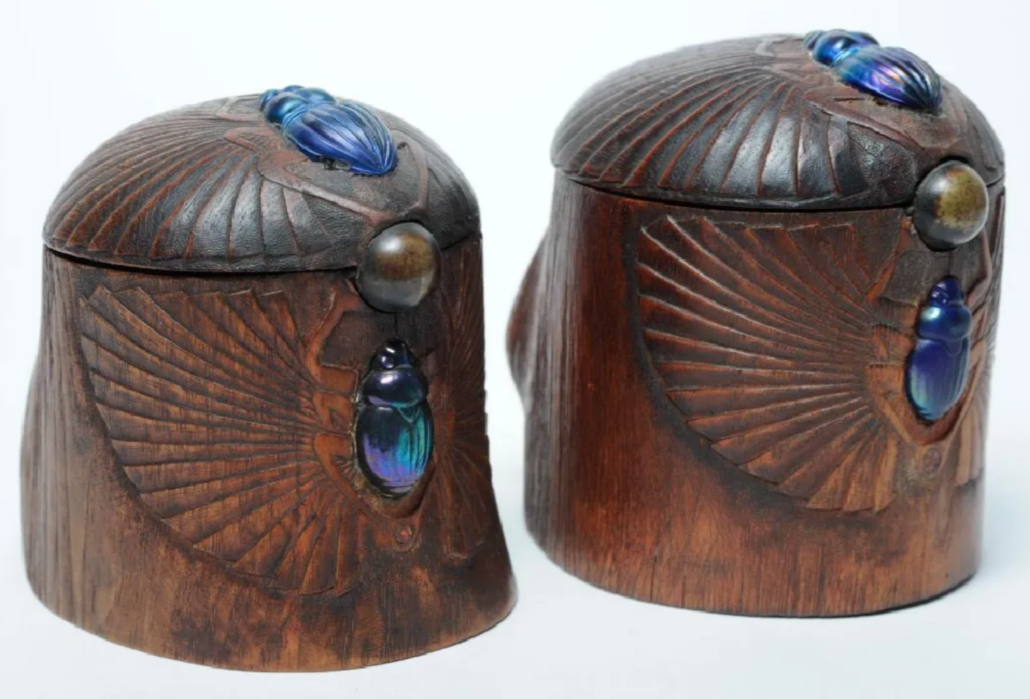
As a purveyor of luxe goods, Louis Comfort Tiffany deeply appreciated so-called “exotic” imagery from distant cultures and had his studio artists incorporate them in items they made at his eponymous studio and factory in New York. Tiffany Studios’ Scarab desk lamp is one of its most desirable, but it also made a Scarab gilt bronze-covered box ornately decorated with bright multi-colored mosaics. A circa-1900 pair of Louis C. Tiffany Studios Scarab humidor boxes sold for $60,000 plus the buyer’s premium in March 2018 at Hill Auction Gallery. They are thought to have been carved from a single piece of wood by Joseph Briggs, an expert craftsman at Tiffany Studios.
At the same time, the scarab was a popular motif in decorative arts in Europe. Romanian sculptor Demetre Chiparus (1886-1947) created several sculptures in the Art Deco period featuring scarabs as design elements, from Dancer with Scarab Halter to an Egyptian Dancer bronze sculpture that realized $18,000 plus the buyer’s premium in October 2019. The latter work depicts a female nude elegantly ornamented with a headdress, jewelry and a scarab belt.
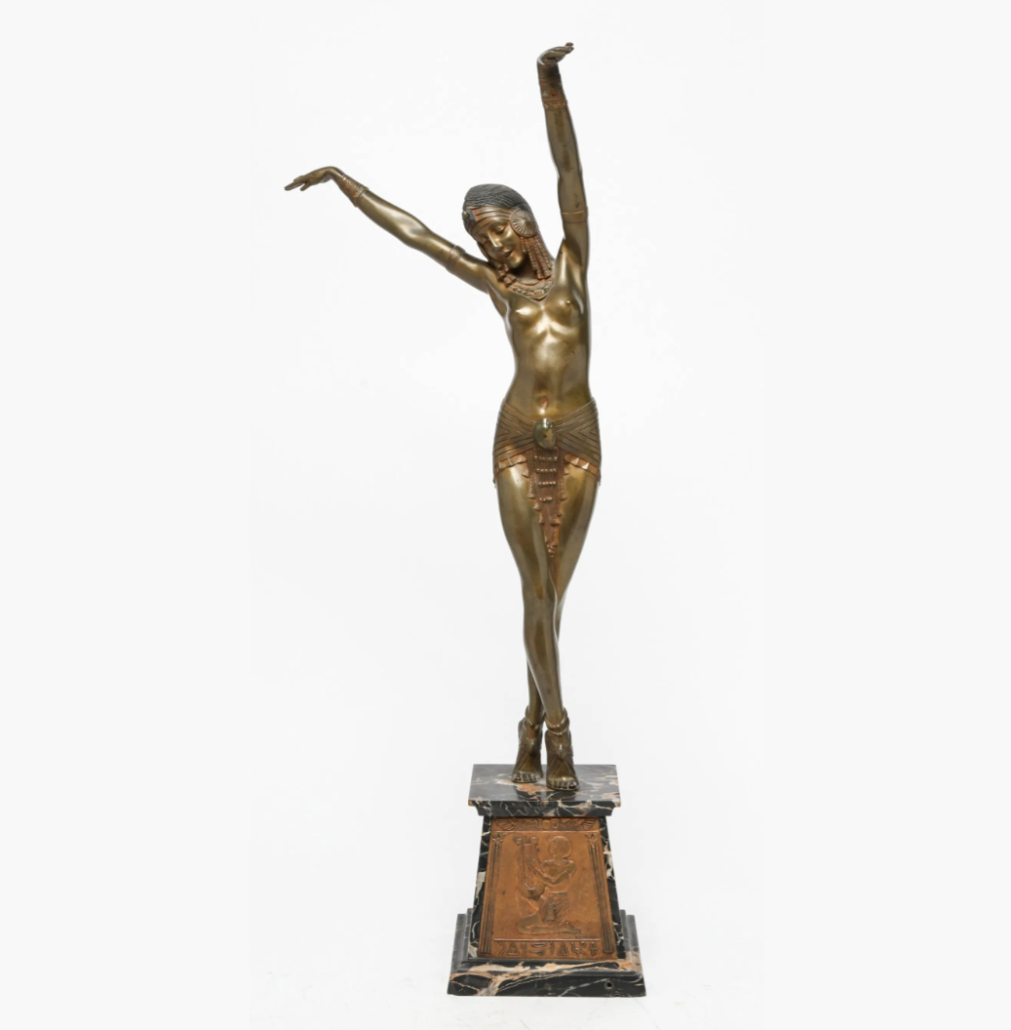
This Demetre Chiparus ‘Egyptian Dancer’ bronze of a woman wearing a scarab belt brought $18,000 plus the buyer’s premium in October 2019 at Auctions at Showplace. Image courtesy of Auctions at Showplace and LiveAuctioneers.
As early as the 1860s, Egyptian motifs began making their way into European jewelry. This was shortly after French archaeologist Auguste Mariette made new discoveries of ancient Egyptian tombs and architecture that were sent back to France and exhibited at the Louvre. A fine example of the form is a Koch Brothers 18K gold, emerald, tourmaline and diamond necklace featuring emerald and dark pink tourmaline winged scarabs. It realized $16,000 plus the buyer’s premium in June 2018 at Fortuna Auction.
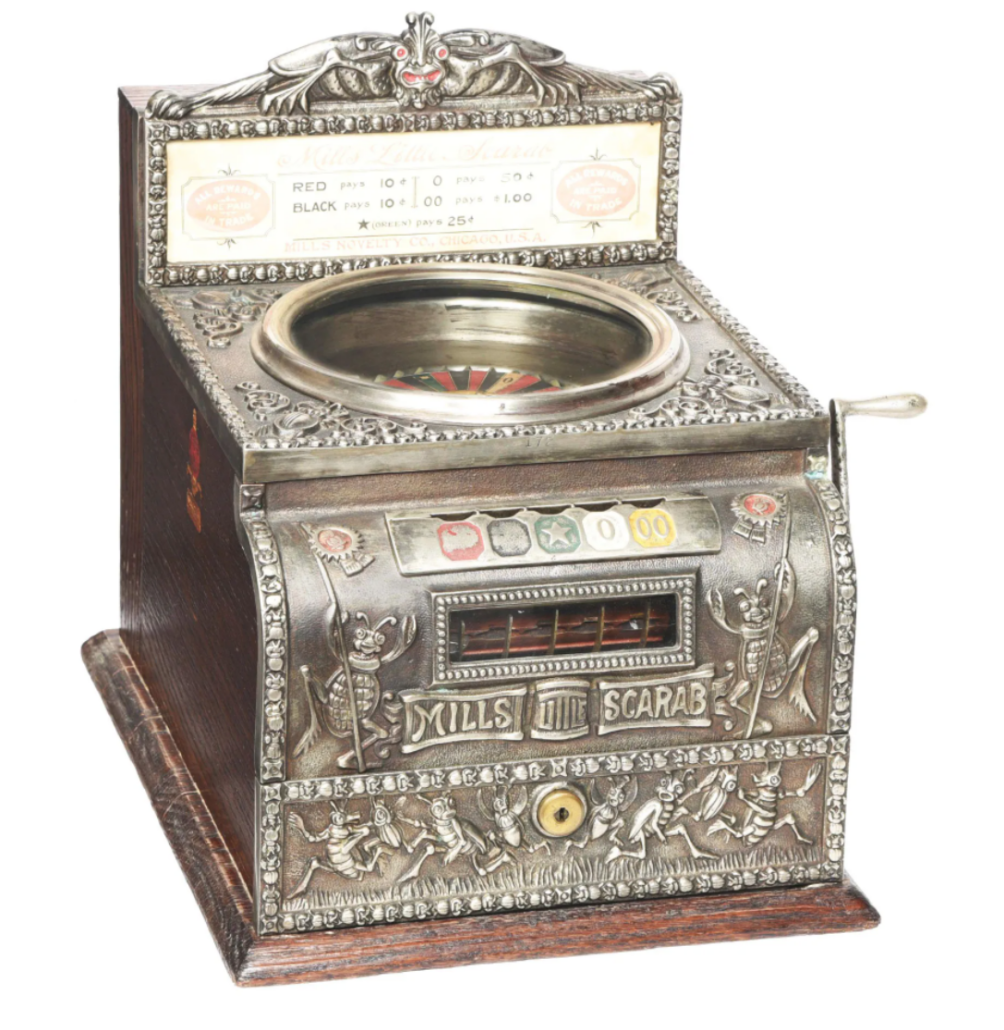
Trade simulators – coin-operated gambling machines that paid jackpots in cigars, gum, candy or other goodies instead of money – enjoyed success in America in part by reflecting cultural trends in the design and decoration of their cases. The exact history of Mills Novelty’s countertop trade stimulator model known as Little Scarab is not well known as not much pre-WWI printed company information remains. According to the International Arcade Museum website, Mills made the machine from 1910 to 1914. An example achieved $22,500 plus the buyer’s premium in October 2020 at Dan Morphy Auctions. Riding the first wave of the Egyptian Revival in America, this cast iron roulette machine has two large embossed scarabs dancing around on its front panel, plus a row of yet more frolicking scarabs below.
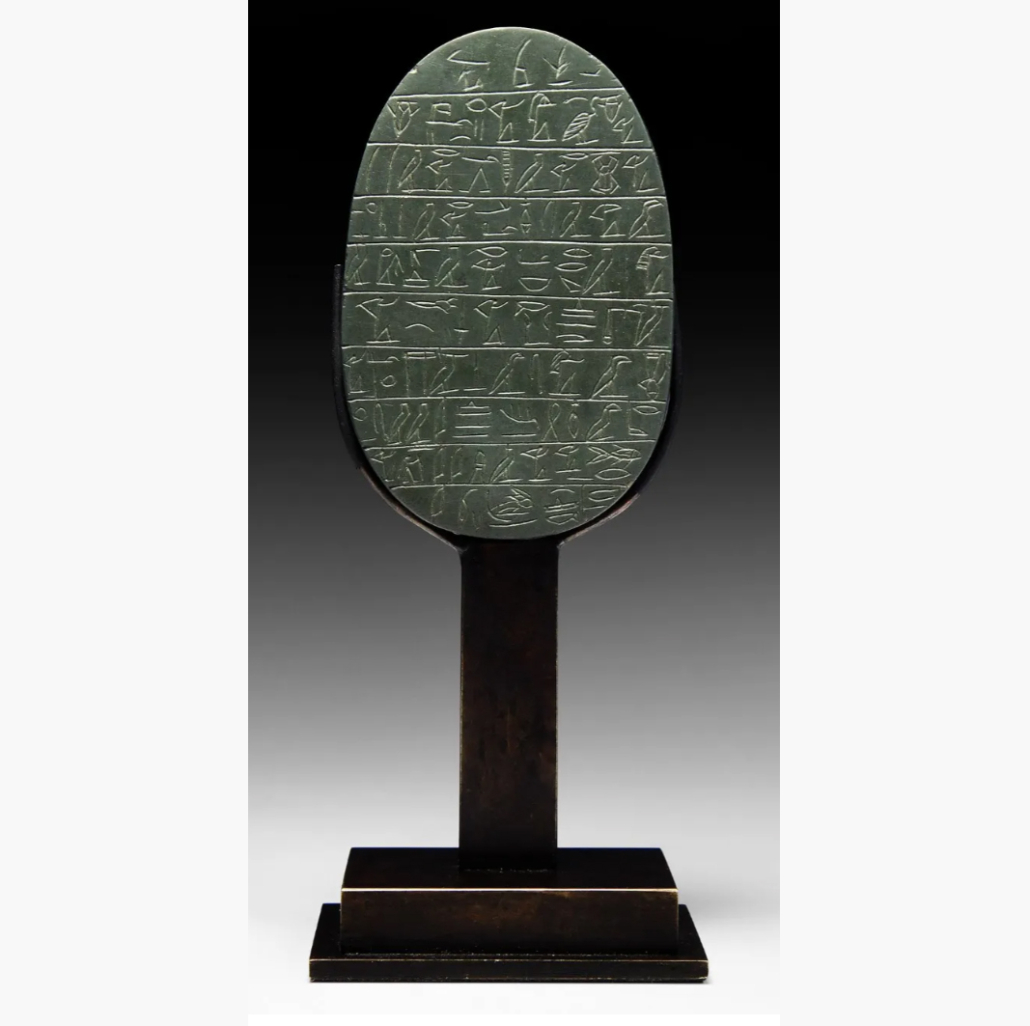
Of course, scarab-emblazoned objects that actually date to antiquity are also of interest, such as this Late Period (64-332 BCE) piece of green schist (a metamorphic rock having coarse grains) in the form of a scarab. It brought $16,536 plus the buyer’s premium in May 2021 at TimeLine Auctions Ltd. Having an ornately detailed carapace, the schist is inscribed with 10 rows of hieroglyphic text, which contain an excerpt from the Book of the Dead. The text includes references to Osiris, the god of the afterlife.
While the scarab no longer holds the same religious or symbolic significance it once did, it endures as a decorative motif, and it continues to enchant generation after generation of collectors.
# # #



